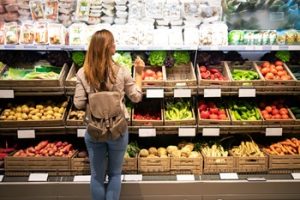At the 2021 USA Peanut Congress, a panel from The Seam, led by Chairman and CEO Mark Pryor, gave a presentation at American Peanut Council’s Sustainability Committee meeting.
APC: The Peanut Congress was one of the industry’s first in-person meetings in several months. Why did you decide to give a presentation here?
MP: First of all, this was a great opportunity to finally meet with industry leaders and colleagues – in person – after a year and a half of video conferencing and Zoom meetings. This meeting was particularly important to us, because of the broad industry representation from all segments of the peanut value chain.
APC: What did your team present and why?
MP: We demonstrated our company’s sustainability platform that is currently used to power the U.S. Cotton Trust Protocol, as well as offered a look at our future roadmap for a “whole farm” sustainability model – one that is both farmer-centric and multi-crop.
Throughout our software delivery, a guiding approach for us is in lowering the burden of data collection on farmers, while also driving standards through consistency, efficiency, quality and integrity. We’re proud and delighted by every opportunity to showcase this mission.
APC: How did you wind up at The Seam? Your background appears to be strongly based in IT management and strategy.
MP: Following a 10-year career in banking software, I joined The Seam in October of 2000, as the Manager of Application Software Development. While in this hands-on role, my team developed a multi-tenant, multi-commodity platform which continues to operate globally today. Auction platforms, interactive trading, commodity loan management, electronic warehouse receipt systems were also designed and successfully implemented.
In 2004, I was named Director of Information Technology, and in 2006 to Vice President of Information Technology reporting to the CEO. While leading an incredibly talented team, our platforms were further enhanced and extended to additional commodities and markets such as grains, peanuts and the food industries.
APC: How did The Seam integrate sustainability into its existing platforms?
MP: In 2018, The Seam announced its affiliate membership with Field to Market: The Alliance for Sustainable Agriculture, dedicated to defining, measuring and advancing the sustainability of food, fiber and fuel production.
With this new relationship, we began the process of becoming a Qualified Data Management Partner (QDMP) to integrate environmental metrics and sustainability algorithms from Field to Market’s Fieldprint® Platform directly within The Seam’s software model. Combined with technologies such as blockchain, these integrations provided us with a powerful new tool set for delivering science-based metrics, provable attestations, selective transparency and enhanced data security through a farmer-friendly experience.
Although the data partner qualification process with Field to Market was rigorous, it was well worth it. As one of only seven QDMPs in the country, we’re extremely pleased with the ongoing partnership and technology integration within our platforms.
APC: Why was linking sustainability data with blockchain technology important to The Seam?
MP: It really boils down to recordkeeping and storytelling. Increasingly, sustainable brands, driven ultimately by consumers, want to know where products are sourced, and the practices used in the production and harvesting of the crops. Like entries in a journal, sustainable farming attributes and practices for agriculture production are placed into a secure digital ledger to assist the farmer in telling their sustainability story more broadly and consistently through data. Technologies like blockchain provide us with an extra level of assurance and integrity that ultimately builds trust in the information itself.
APC: What does the future of AgTech look like?
MP: Technology is now pervasive in everything we do. In agriculture, there is an explosion of innovation underway in biotech, mechanical technology and agri-business software technology. The undeniable challenge posed to warrant these innovations is to do more with less resources and less environmental impact. Precision agriculture techniques have been gaining more and more traction as infrastructure costs have somewhat lowered and rural broadband has started to expand.
Drones, Internet of Things (IoT) sensors and satellite imagery are now commonplace and have become instrumental to farming operations. We now have mounds and mounds of data. But what do we do with this data? How can we make the data work for us? This is an area that is ripe for continued innovation. Machine learning is one such technology that can help make rapid predictions based on historical data patterns, while also identifying anomalies. From weather patterns to sales patterns and everything in between, data certainly drives decisions in agriculture and will continue to be the primary focus for further innovations.
This interview was originally featured on American Peanut Council.





